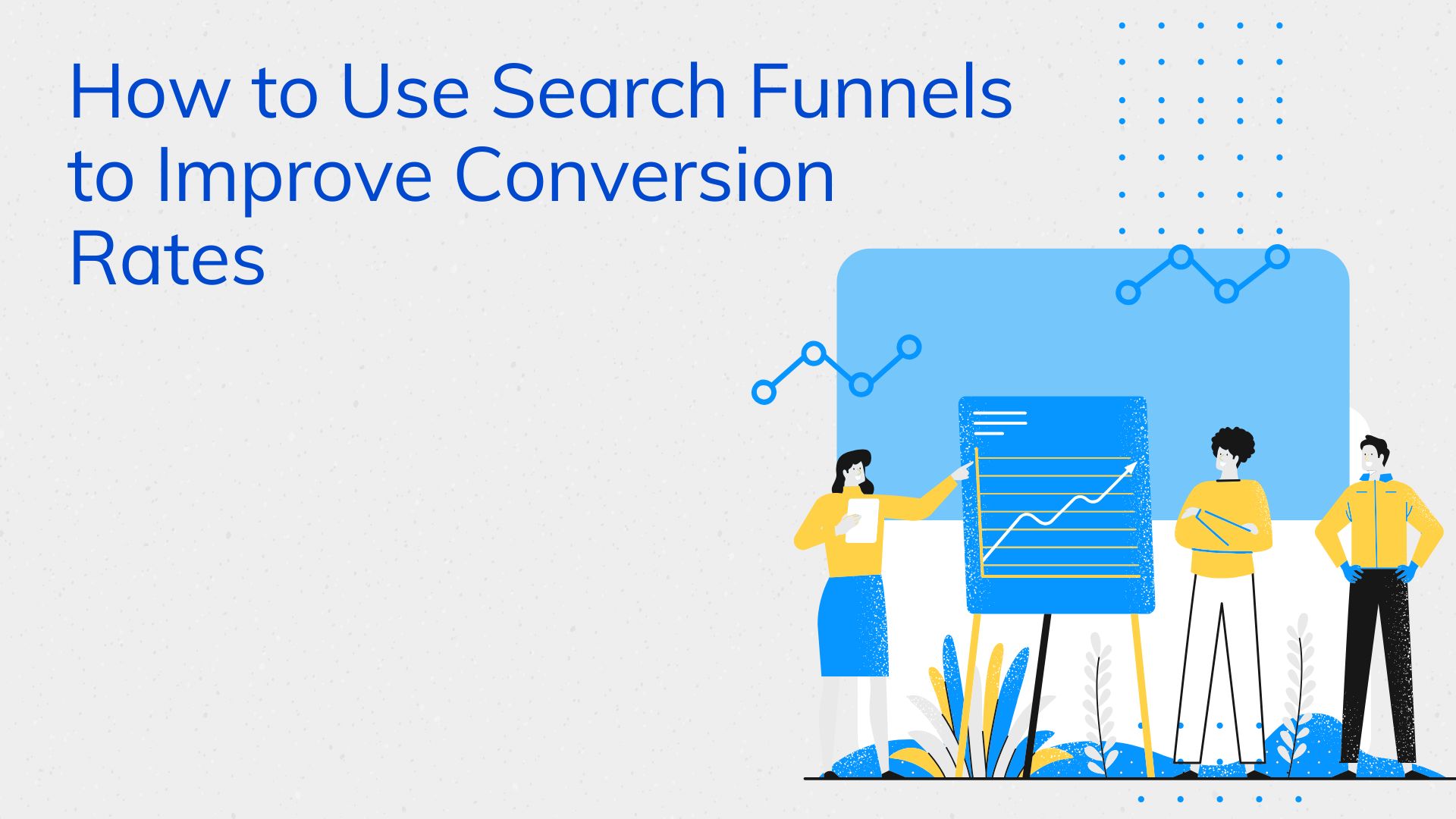How to Use Search Funnels to Improve Conversion Rates
Understanding how potential customers search for products and services online is crucial for any business. Search funnels provide a framework that helps you visualize and analyze the journey users take when searching for information before making a purchase decision. By focusing on the stages of the search funnel, businesses can optimize their marketing strategies and improve conversion rates effectively.
What is a Search Funnel?
A search funnel is a model that represents the steps users go through from the moment they become aware of a need until they make a purchase. It breaks down the user journey into distinct stages, allowing marketers to analyze behavior at each point. Understanding these stages helps businesses tailor their content and marketing efforts to meet user needs effectively.
Stages of the Search Funnel
The search funnel typically includes several stages, each representing a different phase in the customer journey:
- Awareness: This is the initial stage where users realize they have a need or problem. They may start searching for information but haven’t defined what they want yet.
- Consideration: In this stage, users actively seek solutions and compare different options. They might look for reviews, product details, and pricing information.
- Decision: Users at this stage are ready to make a purchase. They have evaluated their options and are looking for the best place to buy.
- Purchase: This is the final stage where the user completes the transaction, becoming a customer.
- Post-Purchase: After the purchase, customers may leave reviews or provide feedback, impacting future purchasing decisions for others.
Each stage plays a critical role in the overall journey, and understanding these stages can significantly enhance your marketing strategies.
Importance of Search Funnels in Marketing
Search funnels are essential for several reasons:
- User Insight: They provide insights into user behavior, helping you understand what customers want and how they find your business.
- Targeted Marketing: By recognizing which stage users are in, you can create targeted content and advertisements that cater to their needs.
- Optimization Opportunities: Analyzing search funnels allows you to identify areas where users drop off, enabling you to make necessary adjustments.
- Improved Conversion Rates: With a clearer understanding of your customers’ journeys, you can enhance their experience and ultimately improve conversion rates.
How to Optimize Each Stage of the Search Funnel
1. Optimizing the Awareness Stage
In the awareness stage, your goal is to attract potential customers who may not yet know your brand. Here are some strategies:
- Content Marketing: Create informative blog posts, articles, and videos that address common problems or questions in your industry. This content should be valuable and shareable, helping to attract users searching for information.
- SEO: Implement effective search engine optimization (SEO) strategies to improve your website’s visibility on search engines. Use keywords that align with user queries, ensuring your content appears in relevant searches.
- Social Media Engagement: Leverage social media platforms to promote your content and engage with potential customers. Share informative posts, infographics, and videos to reach a broader audience.
2. Optimizing the Consideration Stage
At this stage, users are comparing options. To stand out, consider these tactics:
- Detailed Product Descriptions: Provide comprehensive information about your products or services, including features, benefits, and specifications. Use clear language that helps users understand why your offerings are the best choice.
- Customer Reviews and Testimonials: Showcase positive reviews and testimonials to build trust with potential customers. User-generated content can significantly influence purchasing decisions.
- Comparison Guides: Create comparison guides that highlight the advantages of your products over competitors. This can help users see why they should choose your brand.
3. Optimizing the Decision Stage
When users are ready to decide, your aim is to make the purchase process as smooth as possible:
- Clear Call to Action (CTA): Ensure your CTAs are prominent and compelling. Encourage users to take the next step, whether it’s “Buy Now,” “Learn More,” or “Sign Up.”
- Simplified Checkout Process: Make the checkout process as simple as possible. Reduce the number of steps and required fields to prevent cart abandonment.
- Limited-Time Offers: Create a sense of urgency with limited-time offers or discounts. This can encourage users to make a decision more quickly.
4. Optimizing the Purchase Stage
This is the moment of truth. Make sure everything goes smoothly:
- Confirmation Emails: After a purchase, send confirmation emails that reassure customers their order has been received. Include details about their purchase and expected delivery times.
- Provide Customer Support: Ensure that customer support is readily available to assist with any questions or concerns during the purchase process.
5. Optimizing the Post-Purchase Stage
The journey doesn’t end with a purchase. Engaging customers after the sale is crucial:
- Follow-Up Emails: Send follow-up emails to thank customers for their purchase. Encourage them to leave feedback or reviews.
- Loyalty Programs: Implement loyalty programs to encourage repeat purchases. Rewarding customers for their loyalty can help build long-term relationships.
- Continuous Engagement: Keep customers engaged with relevant content, special offers, and updates. Use social media and email marketing to stay in touch.
Tools to Analyze Search Funnel Performance
To effectively analyze your search funnel performance, consider using the following tools:
Google Analytics
Google Analytics is an essential tool for tracking user behavior on your website. You can monitor metrics like bounce rates, average session duration, and user flow to see how visitors navigate through your site. Setting up goals will help you track conversions and understand which channels drive the most traffic.
Heatmap Tools
Heatmap tools like Hotjar or Crazy Egg provide visual representations of user behavior on your site. You can see where users click, scroll, and engage with your content. This information helps identify areas that may need improvement, allowing you to optimize the user experience.
A/B Testing Tools
A/B testing tools such as Optimizely or Unbounce enable you to test different variations of your website elements. By experimenting with headlines, CTAs, and layouts, you can determine which versions lead to higher conversions.
Customer Feedback Tools
Utilize tools like SurveyMonkey or Typeform to gather customer feedback. Understanding user satisfaction and pain points can guide your optimization efforts and improve the overall customer experience.
Conclusion
Using search funnels to improve conversion rates involves understanding the distinct stages of the user journey. By optimizing each stage—awareness, consideration, decision, purchase, and post-purchase—you can create a more effective marketing strategy that resonates with potential customers. With the right tools and strategies in place, your business can enhance user experiences and ultimately increase conversion rates. By investing time and resources into understanding and optimizing the search funnel, you can create a smoother path for users, leading to higher satisfaction and loyalty.
FAQs:
1: What are the key stages of a search funnel?
The key stages of a search funnel include:
- Awareness: Users realize they have a need or problem and start searching for information.
- Consideration: Users actively compare different options, looking for solutions and gathering information.
- Decision: Users are ready to make a purchase and evaluate where to buy.
- Purchase: The user completes the transaction, becoming a customer.
- Post-Purchase: Customers may leave reviews or provide feedback, influencing future buyers.
Understanding these stages helps businesses tailor their marketing strategies to meet user needs effectively.
2: How can I optimize the awareness stage of the search funnel?
To optimize the awareness stage, consider the following strategies:
- Content Marketing: Create valuable blog posts, videos, and infographics that address common problems or questions in your industry.
- Search Engine Optimization (SEO): Implement SEO strategies to improve your website’s visibility in search engine results, ensuring potential customers can find your content.
- Social Media Engagement: Share informative and engaging content on social media platforms to attract a wider audience and increase brand awareness.
These tactics can help draw users in who are just beginning to explore their options.
3: Why is it important to analyze the search funnel?
Analyzing the search funnel is important because it provides insights into user behavior at each stage of their journey. By understanding how customers interact with your content and where they drop off, you can identify areas for improvement. This analysis enables businesses to create targeted marketing strategies, optimize user experiences, and ultimately increase conversion rates. By focusing on each stage of the funnel, you can ensure that potential customers receive the right information at the right time, leading to a smoother purchasing process.














Post Comment